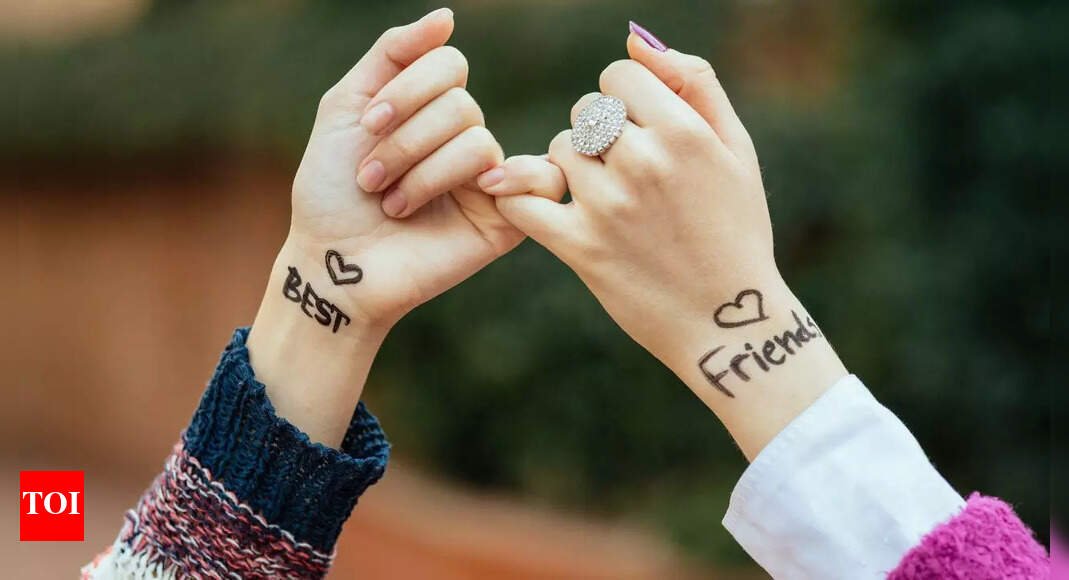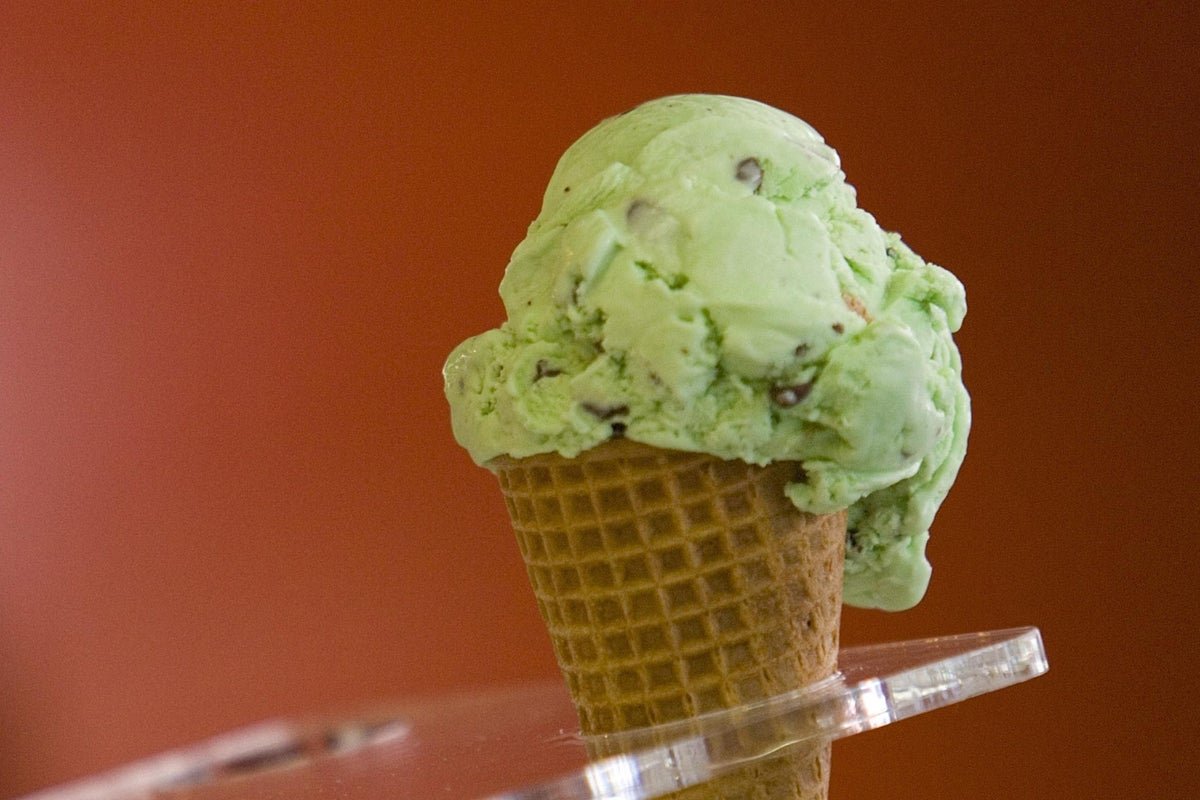The next time you tell your besties, “I feel like we’re related,” or “You’re family” science might back you up! A groundbreaking study published in Proceedings of the National Academy of Sciences (PNAS) in 2018 finds that our friends are genetically more similar to us than strangers— even if they’re unrelated– and this could play a surprising role in how we choose our friends.While it’s long been known that people tend to marry or befriend others with similar interests, values, or lifestyles, researchers are now digging deeper into how much of that connection might be because of similar genetics. The study, conducted by researchers from Stanford University, Duke University, and the University of Wisconsin–Madison, looked at over 5,000 pairs of adolescent friends using data from Add Health— this is a long-term U.S. study that has tracked students from grades 7 to 12 since the 1994–1995 school year.
What researchers found
Interestingly, researchers found that friends were more genetically similar to each other than to random individuals in the same population. In fact, the genetic similarity between friends was about two-thirds as strong as that between the average married couple. According to study author Benjamin Domingue, an assistant professor at Stanford Graduate School of Education, this genetic similarity is not as strong as that seen in siblings, but it is still statistically significant as compared to strangers.
Why do we befriend people who have DNAs similar to ours?

One possible reason is a concept called social homophily. This theory suggests that people naturally form connections with others who are like them— including traits that may be influenced by genetics. For example, personality traits, energy levels, and even tendencies toward certain habits could be inherited, and that could subtly draw similar people together making them friends.But there’s another angle too— social structuring. This is the idea that people form relationships within the environments they inhabit, which themselves may be influenced by genetics. For instance, traits like educational achievement or body mass index (BMI) have both social and genetic reasons. The study found that friends often shared these traits. On the other hand, characteristics like height— which is also genetic— didn’t show strong similarities among friends, likely because height doesn’t influence our social choices in the same way as education or lifestyle might do.When studying schoolmates, the researchers also discovered something interesting: Even among students who weren’t friends, genetic similarities were present— but it was to a lesser degree. Schoolmates were about half as genetically similar as friends, but still more similar than strangers. This indicates that just being part of the same school environment creates genetic clustering. According to Domingue, this finding reinforces how deeply intertwined our genes and our social environments really are, reported the TIME.“Are individuals actively selecting to be around people who are like them, or is it due to impersonal forces, such as social structures, that we all are affected by?,” Domingue asked. His team believes the answer lies more in the structure— the schools we attend, the neighbourhoods we live in, and the families we grow up in.Kathleen Mullan Harris, co-author and professor of sociology at the University of North Carolina at Chapel Hill, adds that the genetic similarity among schoolmates could be driven by a lot of factors– from geographic location to parental choices about education. “It’s a complicated equation, and one that researchers need to pay more attention to,” she said.In fact, the researchers believe this study should serve as a wake-up call for geneticists. When studying the influence of genes on traits like educational attainment, it’s crucial to consider the social environment. What may appear as a purely genetic effect might actually reflect the shared environment of a school or community.In a nutshell, your friendships may be about more than shared interests— they could be written in your genes, shaped by your surroundings, and driven by the invisible forces of both biology and social structure.Intriguing, right? Tell us your views on this in the comments section below.
var _mfq = window._mfq || [];
_mfq.push([“setVariable”, “toi_titan”, window.location.href]);
!(function(f, b, e, v, n, t, s) {
function loadFBEvents(isFBCampaignActive) {
if (!isFBCampaignActive) {
return;
}
(function(f, b, e, v, n, t, s) {
if (f.fbq) return;
n = f.fbq = function() {
n.callMethod ? n.callMethod(…arguments) : n.queue.push(arguments);
};
if (!f._fbq) f._fbq = n;
n.push = n;
n.loaded = !0;
n.version = ‘2.0’;
n.queue = [];
t = b.createElement(e);
t.async = !0;
t.defer = !0;
t.src = v;
s = b.getElementsByTagName(e)[0];
s.parentNode.insertBefore(t, s);
})(f, b, e, ‘https://connect.facebook.net/en_US/fbevents.js’, n, t, s);
fbq(‘init’, ‘593671331875494’);
fbq(‘track’, ‘PageView’);
};
function loadGtagEvents(isGoogleCampaignActive) {
if (!isGoogleCampaignActive) {
return;
}
var id = document.getElementById(‘toi-plus-google-campaign’);
if (id) {
return;
}
(function(f, b, e, v, n, t, s) {
t = b.createElement(e);
t.async = !0;
t.defer = !0;
t.src = v;
t.id = ‘toi-plus-google-campaign’;
s = b.getElementsByTagName(e)[0];
s.parentNode.insertBefore(t, s);
})(f, b, e, ‘https://www.googletagmanager.com/gtag/js?id=AW-877820074’, n, t, s);
};
function loadSurvicateJs(allowedSurvicateSections = []){
const section = window.location.pathname.split(‘/’)[1]
const isHomePageAllowed = window.location.pathname === ‘/’ && allowedSurvicateSections.includes(‘homepage’)
const ifAllowedOnAllPages = allowedSurvicateSections && allowedSurvicateSections.includes(‘all’);
if(allowedSurvicateSections.includes(section) || isHomePageAllowed || ifAllowedOnAllPages){
(function(w) {
function setAttributes() {
var prime_user_status = window.isPrime ? ‘paid’ : ‘free’ ;
var geoLocation = window?.geoinfo?.CountryCode ? window?.geoinfo?.CountryCode : ‘IN’ ;
w._sva.setVisitorTraits({
toi_user_subscription_status : prime_user_status,
toi_user_geolocation : geoLocation
});
}
if (w._sva && w._sva.setVisitorTraits) {
setAttributes();
} else {
w.addEventListener(“SurvicateReady”, setAttributes);
}
var s = document.createElement(‘script’);
s.src=”https://survey.survicate.com/workspaces/0be6ae9845d14a7c8ff08a7a00bd9b21/web_surveys.js”;
s.async = true;
var e = document.getElementsByTagName(‘script’)[0];
e.parentNode.insertBefore(s, e);
})(window);
}
}
window.TimesApps = window.TimesApps || {};
var TimesApps = window.TimesApps;
TimesApps.toiPlusEvents = function(config) {
var isConfigAvailable = “toiplus_site_settings” in f && “isFBCampaignActive” in f.toiplus_site_settings && “isGoogleCampaignActive” in f.toiplus_site_settings;
var isPrimeUser = window.isPrime;
var isPrimeUserLayout = window.isPrimeUserLayout;
if (isConfigAvailable && !isPrimeUser) {
loadGtagEvents(f.toiplus_site_settings.isGoogleCampaignActive);
loadFBEvents(f.toiplus_site_settings.isFBCampaignActive);
loadSurvicateJs(f.toiplus_site_settings.allowedSurvicateSections);
} else {
var JarvisUrl=”https://jarvis.indiatimes.com/v1/feeds/toi_plus/site_settings/643526e21443833f0c454615?db_env=published”;
window.getFromClient(JarvisUrl, function(config){
if (config) {
const allowedSectionSuricate = (isPrimeUserLayout) ? config?.allowedSurvicatePrimeSections : config?.allowedSurvicateSections
loadGtagEvents(config?.isGoogleCampaignActive);
loadFBEvents(config?.isFBCampaignActive);
loadSurvicateJs(allowedSectionSuricate);
}
})
}
};
})(
window,
document,
‘script’,
);
#Shocking #share #DNA #closest #friends #reveals #study #details



